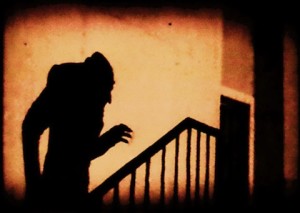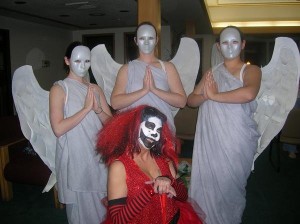It was really hard to decide on what to focus on for this post. I’ve learned a lot this year. I’ve learned that gender neutral characters are really hard to write, pain management is a good thing, tie-in stories take twice as long to write, and anthology invites come when you least expect it. While all of these were great things to discover, I think the most important truth I’ve learned is to always have a pitch or three ready.
You see, this year my first two short stories were published. Yay me! I’ve been working toward this goal for years. However I thought that after I passed this particular career milestone that the rest of my career would be like the instructions on a shampoo bottle — lather, rinse, repeat. On the writing side of things, yes, it was. Except instead of lather, rinse, repeat it’s write, promote, release. But when I’m not holed up in my writing lair it’s very different.
Perhaps it’s because I work at a bookstore and my readers know where to find me. I’m not sure. Anyway, since the release of those stories every time my readers see me they ask “when is your next story coming out?” I never anticipated to have an eager following this early in my career so hearing that question caught me unprepared. Yes, I knew when my next story’s release date. What I wasn’t prepared to do was give a promotional pitch. It’s a short story. Writers don’t have to write pitches to sell short stories to editors. We just send in the story. But pitches do come in handy when talking to eager fans.
I think another reason it caught me off guard is that I didn’t expect the dividing line between my professional life and my personal life to blur. For a long time I only had writerly interactions when I was at conventions, workshops, book signings, and the like. When I was at work or church or the grocery store I was just Kim. That’s not the case anymore. People know me as Kim May, the local author and bumping into me is — to them — an awesome highlight of their day. Sure, there are times when I’m still an anonymous local but the second a reader recognizes me I have to be ready to snap into “author mode”. I have to be ready to answer questions about what they read and most importantly promote my next story.
Now that I have an eager audience I have to keep them engaged. If I don’t have an update for them they might lose interest and I can’t afford to let that happen. Yes, I could just refer them to my blog for updates but that comes across as lazy. Plus they’ll probably forget by the time they’re back on the internet. Telling them in the moment gives them the information; and even if they forget the release date they’ll still remember that I have something new coming out. It also preserves an air of professionalism. You can never have too much of that.
Check out Kim May’s bio to find out more.



